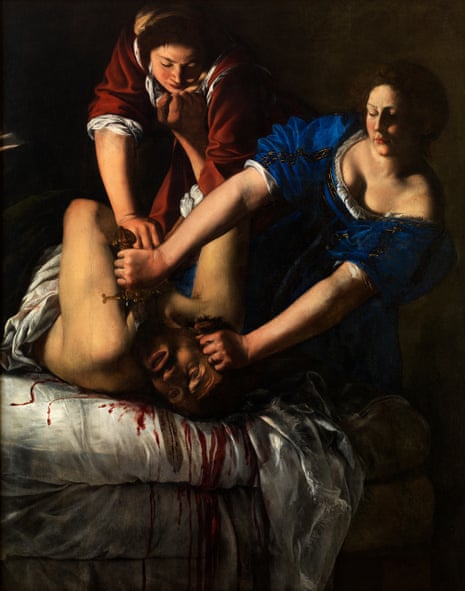A weekly Guide column in which we dissect the influences and interpretations of a work of art
Heads up …
Artemisia Gentileschi was 20 in 1612 when she created this iconic painting of Judith, a Jewish widow, beheading Holofernes, an Assyrian general who had come to annihilate her city. The story had been popular with artists since the Renaissance, a kind of female version of David and Goliath, with the little guy triumphing and turning the power structure on its head.
Vengeance is mine …
For a female painter looking to make her mark it was a great subject, but Artemisia may well have felt a special affinity for this vision of female vengeance. Born in Rome in 1593, the systemic prejudice she faced in becoming a painter was immense. On the one hand, she was a woman from a troubled background whose mother had died when she was 12 and who, although raised in the painting trade, was near-illiterate until adulthood. She was also a rape survivor who endured a scandalous trial in which she stuck to her testimony while being tortured with thumbscrews. Yet, like Judith or David, she beat the odds, establishing a painting studio in Naples with her daughter and counting Europe’s rulers among her patrons.
Shock and gore …
In marked contrast with the Judiths of the early Renaissance, in which she resembled a Virgin Mary with a sword, by the 17th century, depictions of the scene were big on bloodshed. In the baroque great Caravaggio’s take, for instance, she is barely out of girlhood and her revulsion at the gory business is evident, with a crone of a maid standing by.
Sister act …
Artemisia’s painting is just as physical but completely different in tone, with a strong-armed Judith going about the butchery with a stoical seriousness of purpose. The maid is young, too: a sister-in-arms. Holofernes grabs the girl’s throat while his blood soaks the white bedsheets. You feel the violent urgency of the moment as the women work together.
The National Gallery, WC2, to 24 January
